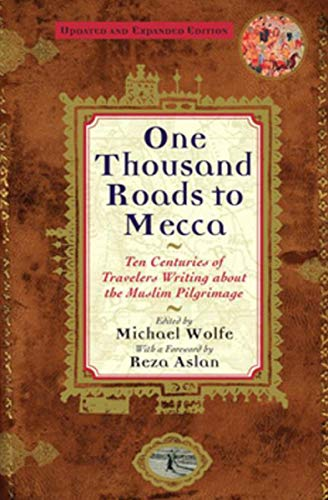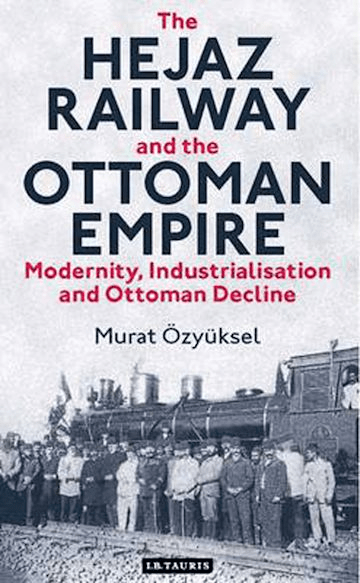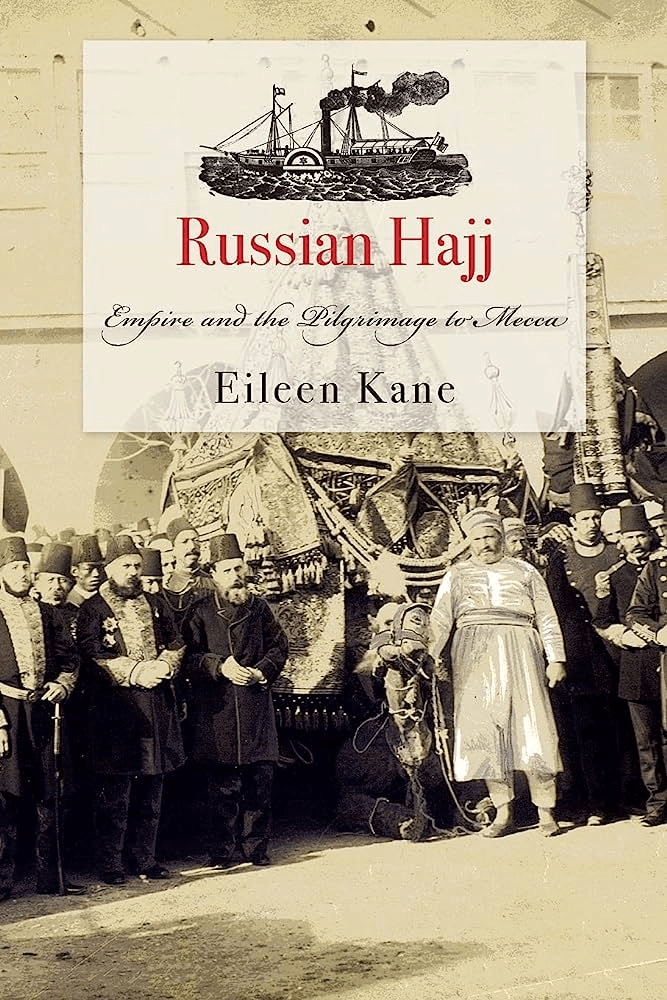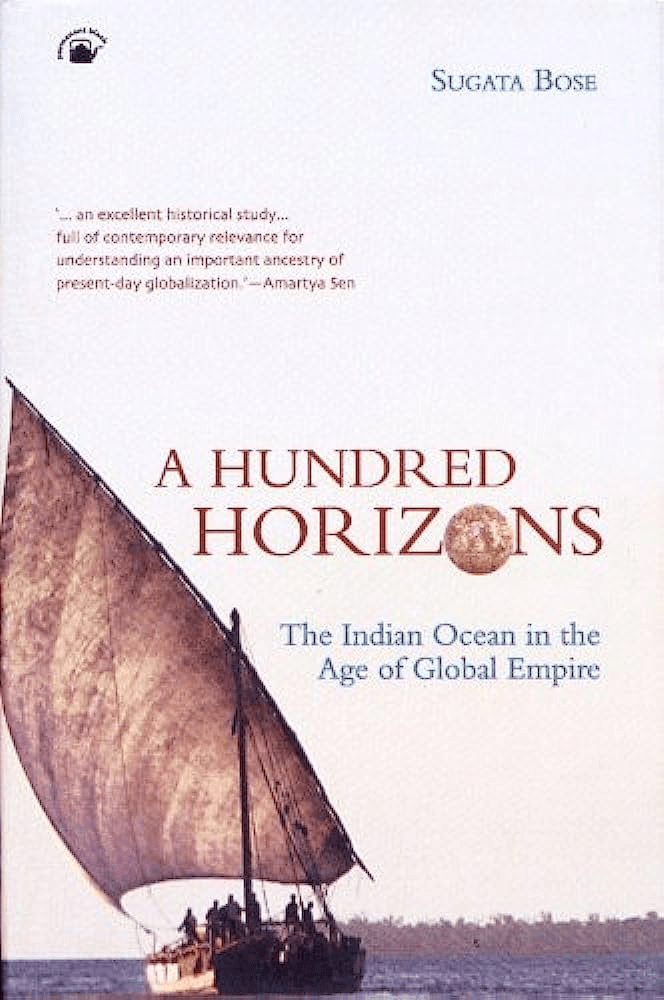Ayah Aboelela
وَأَذِّن فِى ٱلنَّاسِ بِٱلْحَجِّ يَأْتُوكَ رِجَالًۭا وَعَلَىٰ كُلِّ ضَامِرٍۢ يَأْتِينَ مِن كُلِّ فَجٍّ عَمِيقٍۢ
“And proclaim to the people the ḥajj [pilgrimage]; they will come to you on foot and on every lean camel; they will come from every distant pass”
Al-Hajj, Ayah 27.
Year after year, virtually uninterrupted since the Hajj of Prophet Muhammad ﷺ over fourteen centuries ago, Muslims from all directions have made the trek to Makkah in response to the call of God. Men and women, rich and poor, near and far, of every race, tongue, and socioeconomic status; the story of the Hajj encompasses pilgrims from every corner of the earth, each of them carrying the tradition of uniting with fellow members of the ummah in one place, at one time, with one goal.
But the story of the Hajj is not just limited to Muslim pilgrims. It includes several other groups: Hejazi locals who served as hosts and guides for visiting pilgrims, rulers in the Hejaz and beyond who financed hajj caravans and expansions of the Haramayn, queens and sultanas who endowed waterways, paved roads, soup kitchens, and lodging buildings for pilgrims, villagers and families who celebrated the departure and return of their pilgrims, ship owners who ferried pilgrims across the seas and oceans, and many more. Nor is it limited to Muslims. Non-Muslims have always been involved with the Hajj, whether they were colonial officials attempting to control it as a means of exerting their authority on Muslims worldwide, or curious travellers who riskily disguised themselves to glimpse and record the great pilgrimage. Nor is it even limited to just humans; several environmental actors played major roles in these stories, including camels and other animals for riding and sacrifice, desert routes, mountain passes, monsoon seasons, waterways, and flash floods, as well as the infrastructure that affected and was affected by them, such as railway routes, steamships, quarantine stations, caravanserais, and urban architecture.
This book list features resources that examine the story of the Hajj from these many angles. The global, local, and personal impacts of this significant annual phenomenon are preserved in historical records, including eyewitness accounts, official documents, diplomatic letters, newspapers, and, more recently, photographs. Synthesizing these sources allow us to imagine the Hajj experience across the past millennium through different perspectives. Most importantly, they show us that for centuries, the Hajj has highlighted and gifted us with strengthened ummatic unity, as all the hujjaj unite at the Kabah and the plains of Arafat to declare their faith in Allah.
One Thousand Roads to Mecca: Ten Centuries of Travelers Writing about the Muslim Pilgrimage
Michael Wolfe

The hajj memoir is a whole genre of literature on its own, consisting of countless records written throughout the centuries in multiple languages and perspectives. This anthology conveniently narrows them down to about two dozen unique memoirs. Spanning a millennium (the earliest memoir was written in 1050 A.D. and the latest in 2001), it chronologically allows us to glimpse the richness of the ummah’s diversity. It includes writers, men and women, from Persia, Andalusia, Morocco, the Hijaz, and India, sometimes multiple writers from the same place but separated by centuries. It also features hajj writings by Westerners, some of whom disguised themselves as Muslims, and some who converted to Islam. Each writer reveals a unique personality, personal circumstances, and temporal and spatial context, which all create an individual perspective on the Hajj. Together, these memoirs show us the ways that Hajj experiences dramatically changed throughout the centuries, as the Hajj administration passed through various tribes, empires, and nations, and as travelers exchanged caravans and sailboats for railways and steamships, and again with buses and airplanes. And yet, we also see the ways in which the Hajj remains fundamentally the same: the same rites, the same unity and diversity, and the same goal of fulfilling a divine obligation.
Length: 620 pages
Highlight:
“The tale of the Hajj is not always a simple one. Its administration through the years has been in the hands and sometimes at the mercy of many a facile potentate, and the cynicism with which it has been manipulated as a symbol can be shocking. In another vein, the Hajj has drawn every kind of traveler to it, making a collection such as this a complex medley of cultures and personalities. Poets, bureaucrats, spies, ne’er-do-wells, queens, slaves, the fabulously wealthy, old and young, lawyers, judges, confidence men, scholars, novelists, existentialists, and devout believers all are represented in these pages. So, too, are Persians, Moroccans, Afghans, Meccans, Spaniards, Australians, Hindi Indians, Austrians, Italians, Swiss, Americans, and Britons, just to mention the authors represented in this volume. Each excerpt adds its part to a larger story.”
Pilgrims and Sultans: The Hajj under the Ottomans
Suraiya Faroqhi

After the Ottomans conquered Egypt and the Hijaz in the sixteenth century, they needed to secure their legitimacy as rulers of the Muslim world. One way this was achieved was by their patronage of the Hajj. This book examines the many efforts taken by the sixteenth-seventeenth-century Ottoman sultans to prove their worth and competence as guardians of the Hajj and the haramayn. Taking a social history approach, it also examines how such efforts affected pilgrims’ experiences. Faroqhi relies heavily on eye-witness accounts from this period to show us the logistics of Hajj caravans (including their food and water supplies, security measures, and the roles, and responsibilities of their commanders), the funding and construction of hajj-related infrastructure, and the ways pilgrims used them. The book also emphasizes the relationships that resulted from the Hajj between pilgrims, generous donors and recipients, government officials, and others. True to the diversity of the Hajj, individuals from around the world make their appearance here: Mamluks who delivered Ottoman funds to the Hijaz, Mughals who endowed public buildings in Madinah and Makkah, Persians, Central Asians, North Africans, Yemenis, and even the Dutch and Portuguese, who in this early modern period were embarking on their Age of Exploration and threatened to conquer various important ports on the Hajj route, including Jeddah. Focusing on the encounters between them, the book illustrates for us the many political and social aspects of the Hajj in the early modern period.
Length: 264 pages
Highlight:
“The foreign pilgrims whose laissez-passer we encounter in the Ottoman registers were all people of some standing, and often their position in spiritual or worldly hierarchies was recognized by the Ottoman authorities. Probably the special treatment often granted to them presupposed some research and verification of credentials on the part of the Ottoman government. But matters became even more delicate when members of ruling dynasties visited the Holy City as pilgrims, particularly if these visitors happened to be female. Thus Shah Tahmāsp of Iran sent his consort, the mother of Prince Ismāʿīl, to the Hejaz. Akbar, the Mughal emperor of India, was represented by one of his wives, Salima, and by his aunt, the court historian and memorialist Gul-badan Bëgam. Of course, the two ladies were accompanied by a numerous suite. Female members of the Ottoman dynasty also visited Mecca with some frequency, while no Sultan ever performed the pilgrimage. The only prince ever to do so was Prince Djem (1459-95), unsuccessful competitor of Bāyezīd II, who visited Mecca when he was already in exile, and the Hejaz still a Mamluk dependency. Presumably the rationale was that the Sultan never should be too far away from the political centre of the empire and the Habsburg and Iranian frontiers. Princes, on the other hand, might have used the pilgrimage as an opportunity for political activity not readily controlled by their royal relative. Thus Ottoman princesses could be regarded as the politically least troublesome representatives of the dynasty”
Imperial Mecca: Ottoman Mecca and the Indian Ocean Hajj
Michael Christopher Low

With the proliferation of steamships and railways in the nineteenth century, the Hajj became so much more accessible to Muslims around the world. As this period was the peak of European imperialism, many pilgrims were also European colonial subjects, leading to Western fear that the Hajj was a hub for pan-Islamic and anti-imperial solidarity. In this book, Low examines the extent to which this fear was true as well as the Hajj policies by the Ottoman and European empires that resulted from it. Even though the Hijaz was never fully colonised, Low argues that Hajj was an arena in which various powers—especially the British, Ottomans, and local Hijazis—attempted to assert their authority. He argues that Hajj was an enormous phenomenon, one that both Muslim and non-Muslim governments vied for controlling during this period in order to achieve political legitimacy in the eyes of Muslim masses worldwide. Low explores the multiple avenues through which they did this, including public health policies (and the construction and operation of quarantine stations along the hajj route in response to cholera epidemics exacerbated by the hajj), the nationalist use of passports (which specified which power each pilgrim would be under the protection of), and technopolitics (such as the construction of the Hejaz Railway and telegraph lines, which allowed the Ottomans to assert their authority upon Hejazi locals).
By contextualising personal accounts of individuals involved with the hajj against a global backdrop of imperialism, Low skillfully conducts a study in global history that finds connections between Indian Muslim subjects of Britain, European government officials, Ottoman diplomats, Hijazi amirs and Bedouins, railways, cholera epidemics, and quarantine stations on Red Sea islands. This thoughtful study allows us to see the political and environmental significance of Hajj during the peaks of European colonialism and a rapidly changing world.
Length: 416 pages
Highlight:
“Although British administrators’ panicked suspicions of the hajj as a conduit for anticolonial subversion largely belonged to the realm of fantasy, the inter-imperial administrative challenges facing the rapidly industrialising hajj were all too real. With the dawn of the steamship era and the opening of the Suez Canal in 1869, the volume of oceangoing traffic between India and the Red Sea increased exponentially. In the span of less than a generation, the spread of new networks of rail and steam linking the Mediterranean and the Middle East with the Indian Ocean and the rest of Asia revolutionised Muslim mobility and redefined the modern hajj. The contraction of space and time through faster and cheaper rail and steam connections enabled an explosion in travel opportunities for nearly all classes of Muslims. In short order the railheads and port cities of the Mediterranean, Indian Ocean, and Asia were bringing the disparate peoples of the global umma into closer and more sustained contact than ever before. In the midst of this industrial transportation revolution, the hajj, Islam’s quintessential journey, swelled many times beyond its previous size. And in the process, the most basic experiences, rites of passage, laws, infrastructures, and material conditions of pilgrimage were transformed forever.”
A History of Jeddah: The Gate to Mecca in the Nineteenth and Twentieth Centuries
Ulrike Freitag

For over a millennium, Jeddah has maintained a unique status as Makkah’s port city, welcoming a significant portion of pilgrims coming through sea and land routes year after year. In this urban history, Freitag studies the rapid changes in Jeddah’s infrastructure, socioeconomics, and politics throughout the Ottoman Tanzimat era and the beginnings of the Saudi state, emphasising how these changes were deeply intertwined with Hajj. Here, the main historical actors are the residents of Jeddah, including migrants, pilgrims who decided to stay longer than Hajj season, families who have lived there for generations, Makkan amirs who oversee Jeddah’s affairs, and Ottoman officials appointed to Jeddah. Making use of oral histories, newspapers, and city maps, the book also explores Jeddah’s culture, social fabric, and cosmopolitanism, which was owed largely to Jeddah’s position as the “gate to Makkah.” Today, Jeddah still serves as the gate to Makkah, as most visitors to Makkah pass through Jeddah first, either via the airport or train station. Understanding Jeddah’s modernization process allows us to better understand Jeddah’s role in the hajj. This book also nicely complements Imperial Mecca as it greatly emphasises the agency of local Hijazis, highlighting how they influenced and were influenced by global patterns.
Length: 404 pages
Highlight:
“From a local perspective, what is most commonly discussed and conceptualised both in historiography and in oral accounts is the reception of pilgrims. They are considered ḍuyūf bayt Allāh al-ḥarām , ‘guests of God’s sacred house’. To perform pilgrimage to the ‘House of God’, the Kaʿba in Mecca, at least once in one’s life is a core duty for every Muslim who is physically and economically able to do so. The concept of ‘God’s guests’ refers to the notion of a more or less global Muslim community (umma), united in faith and worship to the one God. The geographical location of Jeddah as the main port of Mecca put it upon the Jiddawis (as well as the Meccans) to fulfil the duty of hospitality, which obtained an almost sacred character and a moral obligation due to the religious context. In the past as today, this service for ‘God’s guests’ formed the basis of an entire infrastructure. While it was crucial to the Islamic legitimation of the state that security was guaranteed and sufficient supplies of foodstuffs reached the Hijaz in time, it was locals who provided housing and transport, in addition to selling food and drink to the pilgrims. This regularly entailed renting private accommodation to complete strangers.”
The Hejaz Railway and the Ottoman Empire: Modernity, Industrialization, and Ottoman Decline
Murat Özyüksel

After seventeen years of planning, the Hejaz Railway first transported pilgrims during the Hajj of December 1908. Sultan Abdulhamid II had lofty aspirations for this railway, hoping for it to connect Damascus to Madinah and Makkah and to serve pilgrims far into the future. This book describes how the Hejaz Railway came to be, covering its planning, funding, construction, and the political and social trends surrounding it. Özyüksel argues that Sultan Abdulhamid II undertook this project as a political tool to claim his legitimacy as a caliph, and hence aimed to rely solely on Muslim funds for the railway’s construction. This included not only the Ottoman treasury but also donations from all around the Muslim world, prompted by several advertisements in newspapers and magazines which highlight the growing sense of pan-Islamic solidarity during this time. Moreover, in an attempt to distance themselves from the Europeans, the Ottomans also tried to limit their dependence on European engineers. What resulted was a cooperation between Muslim and European engineers to face the environmental and infrastructural challenges of building a railway through the harsh Hejazi desert. The book also explores various social and political obstructions to the project, including resistance from Beduins, Makkan amirs, and other Hejazi locals. Although it ultimately shut down in 1920 and only ever reached Madinah, studying the history of the Hejaz Railway reveals much about late Ottoman economics, politics, ideology, and ummatic unity that the hajj tends to kindle.
Length: 227 pages
Highlight:
“The Hejaz railway project was based entirely on religious, military and administrative grounds. The secession of 5.5 million Christian subjects as a result of the loss of territories in the Balkans had transformed the empire into an overwhelmingly Asian and Muslim state. According to Abdulhamid, this change of population made it impossible to cling to liberal/Ottomanist policies, which rested on confidence towards the west and relied on the Christian elements of the empire. Only Islam could be a connecting force defining Ottoman identity. The new policy was thus a pragmatic one; it legitimated autocratic rule, exploited Muslim symbols and highlighted the Muslim identity of the empire to retain the imperial lands where Muslims lived. Relations with Muslim countries grew ever closer, clerics were sent to Islamic countries to promote the office of the caliph, pro-Islam newspapers were subsidised, and closer ties were forged with religious orders all with the aim of making Yıldız Palace the Vatican of the Islamic world.”
Russian Hajj: Empire and the Pilgrimage to Mecca
Eileen M. Kane

One does not often think of Muslim history, let alone Hajj history, in the context of Russian history, or vice versa. Yet Kane’s research uncovers several often overlooked sources that challenge us otherwise, including memoirs by Russian hajjis, Russian newspaper articles about the Hajj, and diplomatic exchanges between Russian ambassadors, hajjis, and Ottoman and Hijazi governors. This book reveals the rich history of the Hajj through Russian lands. As Russia’s empire expanded to include Muslim-majority areas, like the Caucasus and Central Asia, Islam became Russia’s second-largest religion, after Russian Orthodox Christianity. This book explores the various reasons the Russian government attempted to control their subjects’ Hajj movement, which include asserting their authority over their Muslim subjects, winning their loyalty and respect, and acquiring considerable economic gain as the hajjis purchased steamship and railway tickets from Russian-owned companies. They did this by constructing infrastructure designed to support the Hajj, and appointing both Muslim and non-Muslim Russian officials to aid pilgrims throughout the journey. With a time period spanning from mid-nineteenth-century Tsarist Russia to the early USSR in the interwar period, this book offers us a unique, often omitted perspective on the Hajj.
Length: 231 pages
Highlight:
“Through its dramatic conquests of Muslim lands and peoples, Russia became integrated into global hajj networks. By the nineteenth century, long stretches of ancient Eurasian caravan routes that had been forged in earlier centuries under Muslim rulers, and had long served as hajj routes to Mecca, now lay within the Russian Empire’s borders. This made the hajj a diplomatic issue in Russia’s dealings with its Muslim neighbors to the south. In the early nineteenth century, Persian and Bukharan rulers routinely petitioned Russia’s tsars, as a matter of their own legitimacy and authority, to allow their subjects access to these routes in making the Meccan pilgrimage. Russia’s tsars, for their part, often honored these requests, and assumed ad hoc a role historically performed by Muslim rulers—that of patron and “protector” of the hajj—securing routes for hajj pilgrims through their realm, and subsidizing their travel to Mecca. Tsars did this with an eye toward developing economic and diplomatic ties
with their Muslim neighbors.”
A Hundred Horizons: The Indian Ocean in the Age of Global Empire
Sugata Bose

A significant portion of pilgrims in the nineteenth and early twentieth century had to travel through the Indian Ocean to reach Makkah. A Hundred Horizons is a global history of the Indian Ocean and its littorals from the late nineteenth to the early twentieth centuries, emphasising global networks of colonial, cultural, ideological, and economic exchanges in the region. Studying writings by Indian Ocean travellers—including colonial officials, pilgrims, capitalists, and labourers—Bose juxtaposes these global exchanges with personal experiences to show the changing perceptions of sovereignty, colonialism (and anti-colonialism), universalism, and nationalism. While this book explores the global connections among the Indian Ocean region more broadly, Chapter 6 specifically focuses on the experiences of Hajj pilgrims travelling through this arena. Arguing that Hajj was “a crucial Indian Ocean activity,” Bose shows how it strengthened many of the pilgrims’ sense of Islamic universalism and anticolonial ideology. Examining several pilgrim accounts, Bose shows how Hajj inspired many works of art that spoke to cross-cultural unity and shared struggles against the British Empire. Thus, this book skillfully contextualises hajj experiences among a global network of exchanges centred in the Indian Ocean arena.
Length: 352 pages
Highlight:
“Muslim pilgrimages at this moment in history had to negotiate a formidable European colonial presence in the entire interregional arena, including well-entrenched British colonial rule in India and less formal pressures that contributed to changing political fortunes in the Hejaz. The hajj had been a key integrative element in the economy, religion, and culture of the Indian Ocean in the precolonial era. If anticolonial nationalism leaped beyond the frontiers of colonies to craft Indian Ocean networks of its own, religious universalism in the form of pilgrimage by sea had certainly not weakened as a bond across the ocean in the age of global empire. Exploring the tension between the pilgrims’ spiritual fervor and the rules of passage defined by colonial rationality, we circle around the center of the pilgrims’ ultimate destination, Mecca, before reaching it.”
A Photographer on the Hajj: The Travels of Muhammad ‘Ali Effendi Sa‘udi
Farid Kioumgi and Robert Graham

Muhammad Ali Effendi Saudi was an Egyptian writer and photographer whose work provides extensive details on the logistics of Hajj in the early twentieth century. During his first Hajj in 1904, he was commissioned by Muhammad Abduh, the Egyptian grand mufti at the time, to photographically record the religious history of Madinah and Makkah. During his second hajj in 1908, he photographed landscapes and urban infrastructure for the purpose of aiding the research of his friend Ali Baghat, an archaeologist. With these goals in mind, Saudi purposefully took photographs to keenly capture the logistics, infrastructure, environment, architecture, transportation technology, and geography of his Hajj journey. Moreover, as the January 1908 Hajj was the last Hajj that took place before the opening of the Ottomans’ Hejaz railway a few months later, we are offered a rare insight into a journey that made use of both modern and ancient practices: boarding the coal-powered train in Cairo, getting fumigated at the quarantine station in Suez, donning the ihram while aboard a steamship on the Red Sea, and confronting hostile Bedouins while riding camels in the Hejaz. Although Saudi’s original writings were sold to a private buyer, the scholars Kioumgi and Graham have parsed and narrated them into English, contextualising the photographs with Saudi’s writings and allowing us to re-experience the Hajj at this time.
Length: 121 pages
Highlight:
“[Saʿudi’s] narrative provides a fascinating insight into the mindset of a sensitive person, able to enter into the profound religious spirit of the pilgrimage to the Holy Places of Islam, while simultaneously being aware of the virtues and failings of those around him. Saʿudi’s deep devotion to his faith is expressed not so much in lengthy discussions of religious doctrine as it is in his vexation and moral outrage at the conditions of the Hajj that prevailed in the final years of Ottoman rule. Throughout his writing, he conveys a powerful sense of social justice with a voice that on occasion turns sanctimonious. He is forever decrying the ill treatment of the poor pilgrims, the selfishness of society, and the shameless greed and duplicity of those in authority. He also bemoans the inadequate precautions taken to prevent the spread of cholera–death from cholera being the greatest risk faced by pilgrims at the time.”
Additional resources:
The Prophetic Hajj: A Pilgrimage of Mercy – Abdal Hakim Murad
Shaykh Abdal Hakim Murad takes a multidimensional approach to the fifth pillar of Islam, incorporating history, culture and ethics into his analysis of the Prophetic Hajj.
Iḥyā’ ‘Ulūm al-Dīn – Book 7, On Hajj – Al Maqasid
Shaykh Yahya Rhodus and Ustadh Amjad Tarsin go through Book 7 of al-Ghazalis Iḥyā’ ‘Ulūm al-Dīn – looking at the merits, rulings and etiquettes’ of Hajj.
Prophet Muhammad’s ﷺ Hajj Story – Yaqeen Institute
Dr Omar Suleiman recounts the story of the original pilgrimage, following the arduous journey of our beloved Rasool that paved the way for our own Hajj experience today.
Ayah Aboelela is a graduate student in World History and Digital Humanities at Northeastern University. She hopes to combine her background in software and love for history and storytelling to make historical stories more accessible to diverse audiences. You can follow her on Instagram @caveofkutub.

